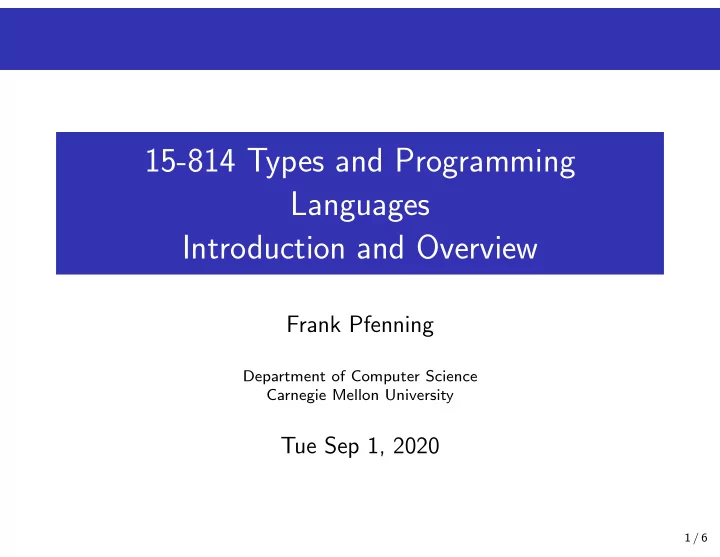

15-814 Types and Programming Languages Introduction and Overview Frank Pfenning Department of Computer Science Carnegie Mellon University Tue Sep 1, 2020 1 / 6
Outline 1 Introductions 2 Course Details 3 Why and How Do We Study Languages 4 λ -Calculus, Part I 2 / 6
Course Details Lectures and attendance, recordings [Canvas > Zoom] Class communication [Piazza] Lecture notes and (optional) textbook [Web Pages] Weekly homeworks (solo, unless noted o.w.) [Canvas] Midterm & final exams [?] Grades: 60% Homework, 15% Midterm, 25% Final [?] Software [ linux.andrew.cmu.edu ] 3 / 6
Why Do We Study Programming Languages? Programming is at the heart of computer science Languages are not “all the same” Some languages are measurably better than others Languages have different purposes Fundamental concepts transcend individual languages 4 / 6
How Do We Study Programming Languages? Break down into small universal building blocks (e.g., functions or pairs) Types are the central organizing principle Focus on semantics, not syntax How does it compute (operational) What does it compute (logical) Investigate properties of all programs expressible in a language 5 / 6
The λ -Calculus 1901 Russell’s Paradox in naive set theory 1910 Russell & Whitehead’s Ramified Theory of Types 1933 Church tries to replace sets by functions (but: inconsistent) 1936 The λ -Calculus (Church & Rosser) 1936 Turing Machines, the Church-Turing Thesis 1940 Church’s Simple Theory of Types (now: consistent) 1980 Martin-L¨ of’s Intuitionistic Theory of Types 2020 15-814! 6 / 6
Recommend
More recommend